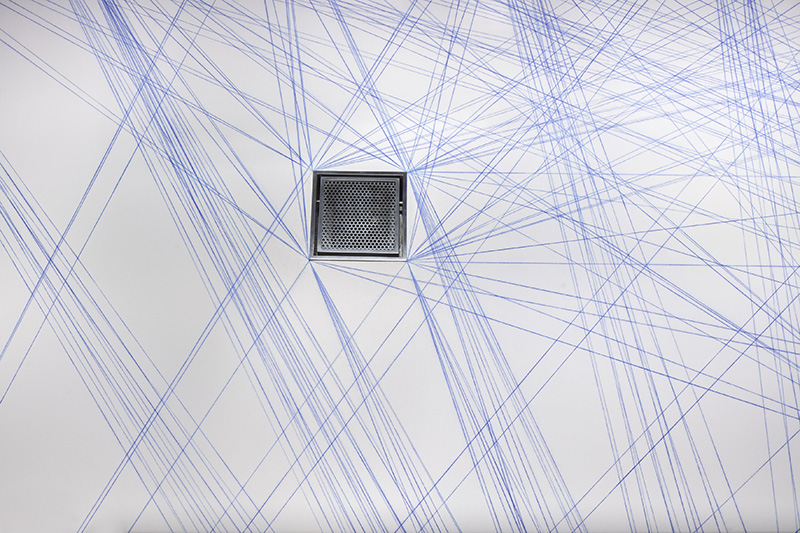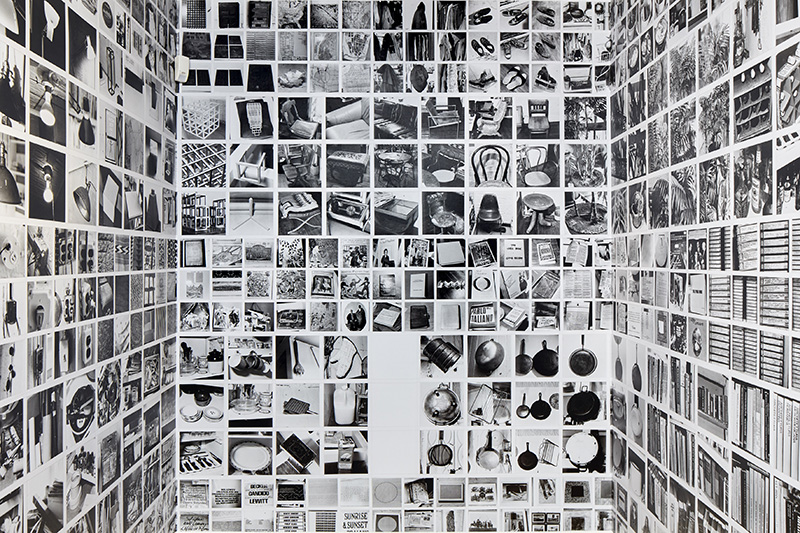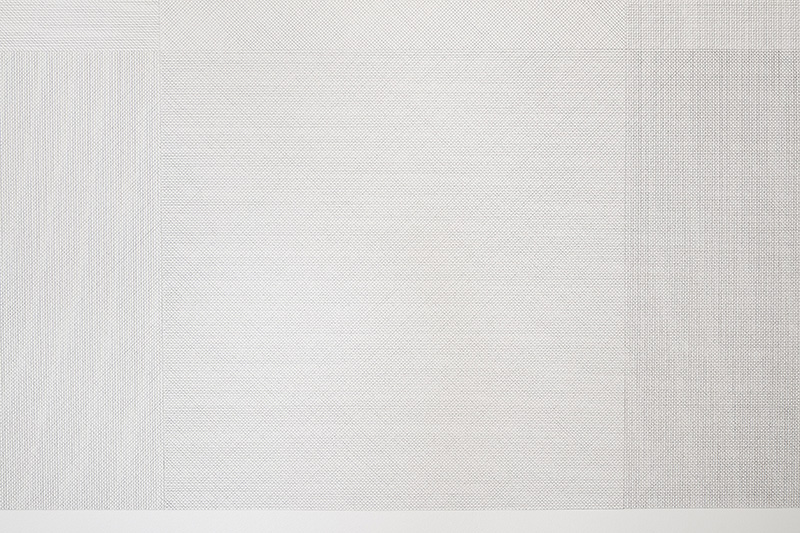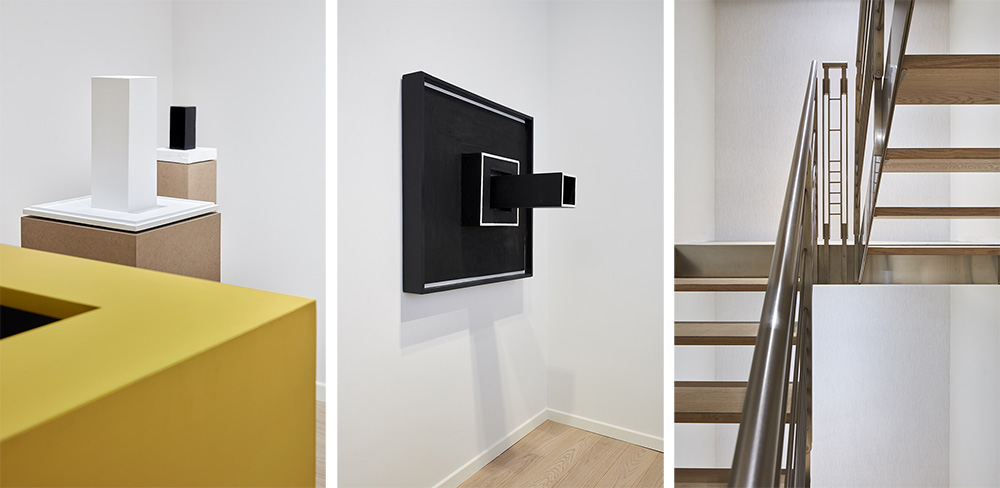ART-PRESENTATION: Sol LeWitt-Between the Lines
 Sol LeWitt is a leading figure of Minimalism and pioneer of Conceptual art. Redefining art production by exploring ideas rather than conventional aesthetics, he distilled art to its essentials. He executed drawings by hand throughout his life, in 1968 he extricated his work from the confines of the frame and transferred it directly to the wall.
Sol LeWitt is a leading figure of Minimalism and pioneer of Conceptual art. Redefining art production by exploring ideas rather than conventional aesthetics, he distilled art to its essentials. He executed drawings by hand throughout his life, in 1968 he extricated his work from the confines of the frame and transferred it directly to the wall.
By Dimitris Lempesis
Photo: Fondazione Carriero Archive
One decade after the death of Sol LeWitt the exhibition “Between the Lines” aims to offer a new perspective on his practice, exploring its confines and singling-out the most interesting moments of the method of investigation and the processes that may arise. With a considerable body of work spanning his entire career, from the famous “Wall Drawings” to series such as “Complex Form” and “Inverted Spiraling Tower,” up to the photographic project “Autobiography” and starting from the peculiarities of the rooms at the Foundation, the exhibition explores the relationship between LeWitt’s work and architecture. Influenced by his time working as a graphic designer in I.M. Pei’s architecture firm, LeWitt would use assistants to produce three-dimensional works he called “Structures”. He wrote: “An architect doesn’t go off with a shovel and dig his foundation and lay every brick. He’s still an artist”. Instead of executing the works of art himself, LeWitt comes up with an idea or plan for his art, usually a set of simple instructions, sometimes with line drawings. He then hands over the written plan to his assistants, and they construct the work. LeWitt’s instructions are both specific and open-ended so that the resulting work of art varies according to the interpretation made by the draftsperson producing the work of art. The “Wall Drawings” on display at the Fondazione Carriero were executed in collaboration with young artists and students in Milan, under the close supervision of the Estate of Sol LeWitt. “Wall Drawing #46: Vertical lines, not straight, not touching, uniformly dispersed with maximum density, covering the entire surface of the wall”, made for the first time in 1970 in Paris by Sol LeWitt himself, presents continuity across the three floors of the venue and invites dynamic participation on the part of viewers. “Wall Drawing #51: All architectural points connected by straight lines” was first installed in 1970 in Turin at both the Museo di Torino and the Sperone Gallery. Although on display simultaneously, the site-specific nature of this drawing means that each installation is a unique version of the work. The content of the work rests entirely on the pre-existing space and was an indication of Sol LeWitt’s interest in more directly engaging the architectural context of his work. Executed for the first time at the Museum of Modern Art in New York in 1975, “Wall Drawing #263: A wall divided into 16 equal parts with all one-, two-, three-, four- part combinations of lines in four directions” may be considered the artist’s manifesto: simple lines in four directions (horizontal, vertical, diagonal to the right, diagonal to the left) and in all combinations. In this quintessential work by LeWitt, the lower section on the bottom right portrays a summary diagram. In 2007, LeWitt made a series of wall drawings known as “Scribbles”, seemingly in contrast with his logic conveyed through pure geometry. Far from the highly detailed execution according to a pre-determined method, the Scribbles bear witness to random logic, inscribed within energetic, sensual activity. Executed on a curved wall that accentuates the dizziness of the sign, “Wall Drawing #1267: Scribbles” confirms the predominance of the existentialist element in the work of LeWitt. It was installed for the first time at the Fondazione Maurizio Morra Greco in Naples in June 2010. For the form of the cube Sol leWitt wrote “The most interesting characteristic of the cube is that it is relatively uninteresting. Compared to any other three-dimensional form, the cube lacks any aggressive force, implies no motion, and it least emotive. Therefore it is the best form to use as a basic unit for any more elaborate function, the grammatical device from which the word may proceed”. A series of Structures: “Incomplete Open Cube 5/1” (1974), “Open Cube / Corner Piece” (1965), “Modular Wall Structure” (ca. 1965), “Modular Wall Piece with Cube” (1965) are on presentation in a logic of space that is compressed. “Autobiography” (1980) is Sol LeWitt’s cheerfully obsessive photographically illustrated artist’s book cum inventory in which each page is arranged in a 3 x 3 grid that displays the majority of the artist’s belongings at the time. The curators of the exhibition have reproduced a selection of pages from the book in two different formats, used as the membrane of the architecture, transforming an intimately wounded introspective view into an immersive space.
Info: Curators: Francesco Stocchi and Rem Koolhaas, Fondazione Carriero, Via Cino del Duca 4, Milan, Duration: 17/11/17-23/6/18, Days & Hours: Mon-Sat 11:00-18:00, http://fondazionecarriero.org





Right: Front: Sol LeWitt, 8x8x1, 1989, Baked enamel on aluminum, 207,01 x 45,72 x 45,72 cm, Courtesy Julie e and Edward J. Minskoff Collection. Back: Sol LeWitt, Wall Drawing #1104: All combinations of lines in four directions. Lines do not have to be drawn straight (with a ruler), 2003, Black marker on mirror, First drawn by: Toon Verhoef, First installation: Edams Museum-Edam, NL, September 2003, Courtesy Estate of Sol LeWitt, Installation view Sol LeWitt, Between the Lines, 2017, Fondazione Carriero, Photo: Agostino Osio, Courtesy: Fondazione Carriero

Center: Sol LeWitt, Wall Structure Black, 1962, Oil on canvas and painted wood, 99,1×99,1×59,7 cm, Courtesy Estate of Sol LeWitt and Pace Gallery, Installation view Sol LeWitt, Between the Lines, 2017, Fondazione Carriero, Photo: Agostino Osio, Courtesy: Fondazione Carriero
Right: Sol LeWitt, Wall Drawing #46: Vertical lines, not straight, not touching, uniformly dispersed with maximum density, covering the entire surface of the wall, 1970, Black pencil, First drawn by: Sol LeWitt, First installation: Yvon Lambert-Paris, May 1970, LeWitt Collection-Chester, CT, Courtesy Estate of Sol LeWitt, Installation view Sol LeWitt, Between the Lines, 2017, Fondazione Carriero, Photo: Agostino Osio, Courtesy: Fondazione Carriero
